mRNA expression analysis

Strain specific analysis of IL23A and IL12B gene expression in B-hIL23A/hIL12B mice by RT-PCR. Mouse Il23a and Il12b mRNA were detectable in thymocyte of wild-type mice (+/+) . Human IL23A and IL12B mRNA were detectable only in homozygous B-hIL23A/hIL12B mice (H/H) but not in wild-type C57BL/6 mice.
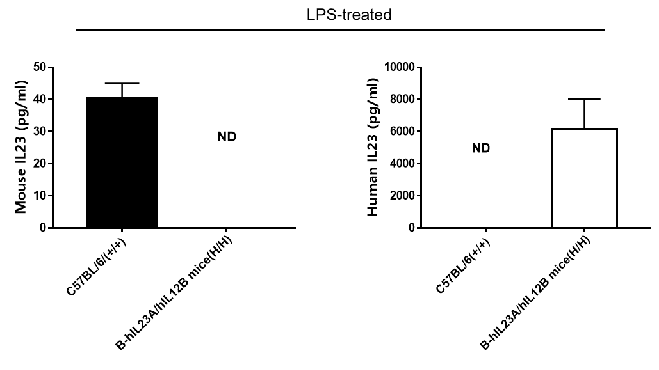
Strain specific IL23 (IL23A/IL12B) expression analysis in homozygous B-hIL23A/hIL12B mice by ELISA. Supernatant was collected from DC cells of wild-type (+/+) and homozygous B-hIL23A/hIL12B mice (H/H) stimulated with LPS in vitro, and analyzed by ELISA with species-specific IL23 ELISA kit. Mouse IL23 was detectable in wild-type mice. Human IL23 was exclusively detectable in homozygous B-hIL23A/hIL12B mice but not wild-type mice.

Analysis of spleen leukocyte subpopulations by FACS. Splenocytes were isolated from female C57BL/6 and B-hIL23A/hIL12B mice (n=3, 7-week-old). Flow cytometry analysis of the splenocytes were performed to assess leukocyte subpopulations. A. Representative FACS plots. Single live cells were gated for CD45+ population and used for further analysis as indicated here. B. Results of FACS analysis. Percent of T cells, B cells, NK cells, dendritic cells, granulocytes, monocytes and macrophages in homozygous B-hIL23A/hIL12B mice were similar to those in the C57BL/6 mice, demonstrating that introduction of hIL23A and hIL12B in place of its mouse counterpart does not change the overall development, differentiation or distribution of these cell types in spleen.
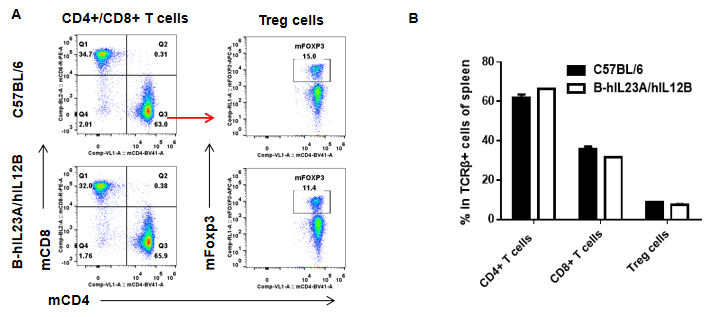
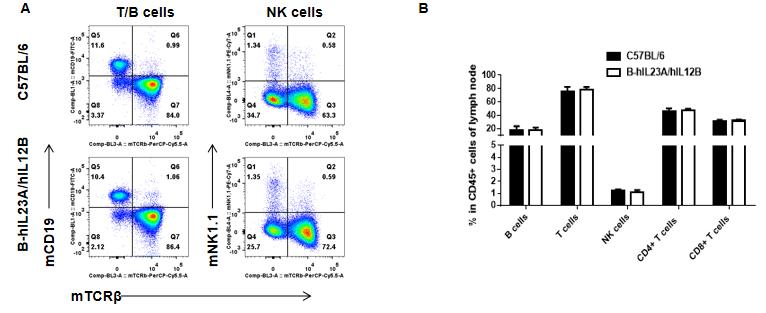
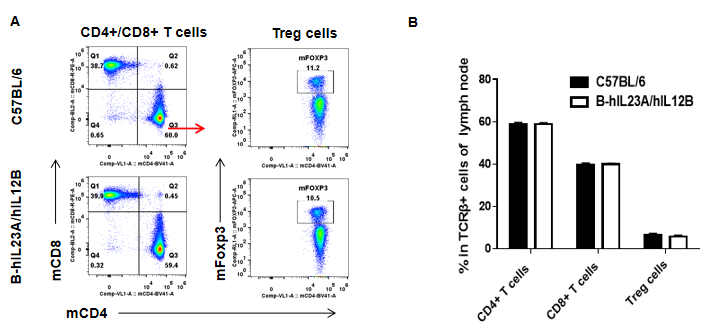
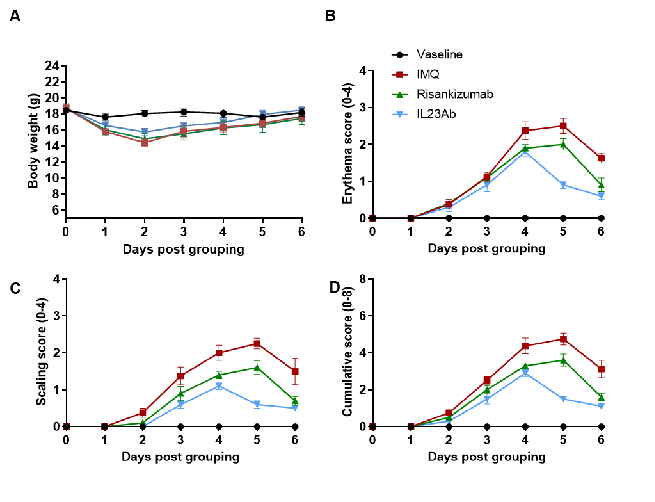
Effects of anti-human IL23A antibody in psoriasis-like skin lesions model of B-hIL23A/hIL12B mice. (A) Body weight changes during treatment. (B-C) Erythema and the scaling score of the back were scored daily on a scale from 0 to 4. Additionally, the cumulative score (erythema plus scaling) is depicted (D). Results indicated that structural features of IMQ-induced skin inflammation is visible and increased in severity up to day 5. Anti-human IL23A antibody can efficiently decrease the development of the psoriasis-like disease in B-hIL23A/hIL12B mice.
 苏公网安备:32068402320845号
网站建设:北京分形科技
苏公网安备:32068402320845号
网站建设:北京分形科技






 010-56967680
010-56967680 info@bbctg.com.cn
info@bbctg.com.cn